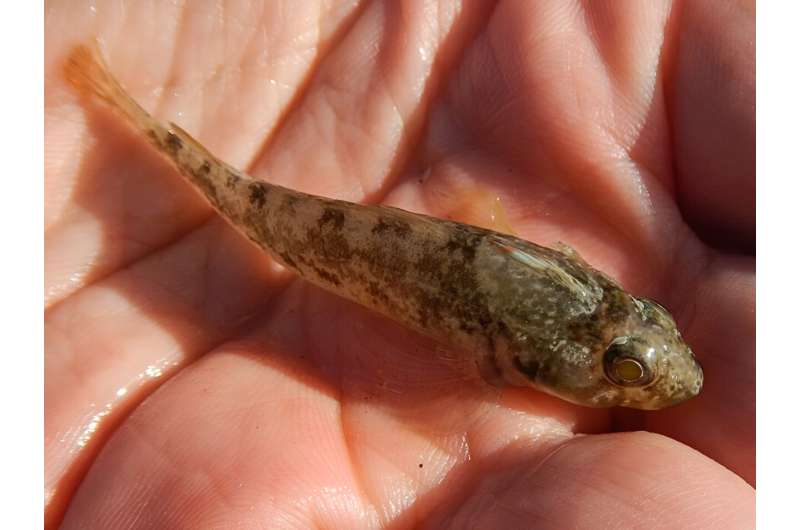
An Otago study has found New Zealand fish species ingest more plastic near urban areas.
It’s the first study to examine how urbanization affects plastic consumption in New Zealand fish species, in a bid to understand whether species in particular locations are more affected than others.
While previous studies have found microplastic levels in sediments increase near urban areas, few studies have examined whether this results in fish ingesting more plastics in those areas.
The study, published in the New Zealand Journal of Marine and Freshwater Research, sampled three sites around Dunedin to demonstrate that fish collected 2.5 km and 10 km from the city center ingested significantly more microplastics than fish collected 25 km away from the city.
Adult mottled triplefins—a nest-guarding intertidal fish—were collected at each of the three sites: Dunedin city center, Port Chalmers, and a rural site, Pūrākanui.
Lead author, Zoology Master’s graduate Fletcher Munsterman, says initially the researchers set out to discover whether there was a correlation between the level of microplastics in the sediment at each location and how much plastic fish had ingested.
However, despite finding no significant relationship between the two, the fish collected at Pūrākanui had ingested 8.5 times less plastic overall than those in Dunedin city, and 6.3 times less plastic than Port Chalmers.
Fish dwelling in the more urbanized areas of the Otago harbor are exposed to far more plastic in the sediment, in correlation with the human population density, he says.
“Even if they aren’t ingesting it directly, they’re still being exposed to the effects from the presence of these plastics. Whether that’s the physical impact or chemical.
“If a fish is eating large amounts of microplastics, and the plastics are too large to pass directly through the system, the fish themselves will hold onto those plastics in their systems, and pass these on to the next level up the food chain when they are eaten.”
Of the total samples collected from all three sites, 83% contained microplastics.
While the Pūrākanui microplastic counts were similar to counts found in the guts of various New Zealand commercial fish species, the Port Chalmers and Dunedin city counts were much higher, with fish averaging 20 microplastics per gut.
Research supervisor Associate Professor Sheri Johnson says she is surprised by the high levels of microplastic concentrations in Otago compared to other areas in New Zealand.
“The concentration of microplastics in sediments and ingested by the triplefins here in Otago are similar to the microplastic levels in the highly-polluted Venetian Lagoon.
“We need to understand more about why Otago sediments and marine life have so much higher concentrations of microplastics.”
Hopefully studies like this make people think more about their use and disposal of plastics, she says.
“It would be great if people would at least collect plastic rubbish when they see it on beaches/shorelines.
“Whenever I see plastic rubbish in these areas, I think about marine life ingesting it and collect it—I try to always carry a bag with me to collect plastic rubbish.”
More information:
Fletcher Munsterman et al, The availability and ingestion of microplastics by an intertidal fish is dependent on urban proximity, New Zealand Journal of Marine and Freshwater Research (2024). DOI: 10.1080/00288330.2024.2365272
Provided by
University of Otago
Citation:
New Zealand fish that are closer to cities ingest more plastic, finds study (2024, July 1)
retrieved 1 July 2024
from https://phys.org/news/2024-07-zealand-fish-closer-cities-ingest.html
This document is subject to copyright. Apart from any fair dealing for the purpose of private study or research, no
part may be reproduced without the written permission. The content is provided for information purposes only.




